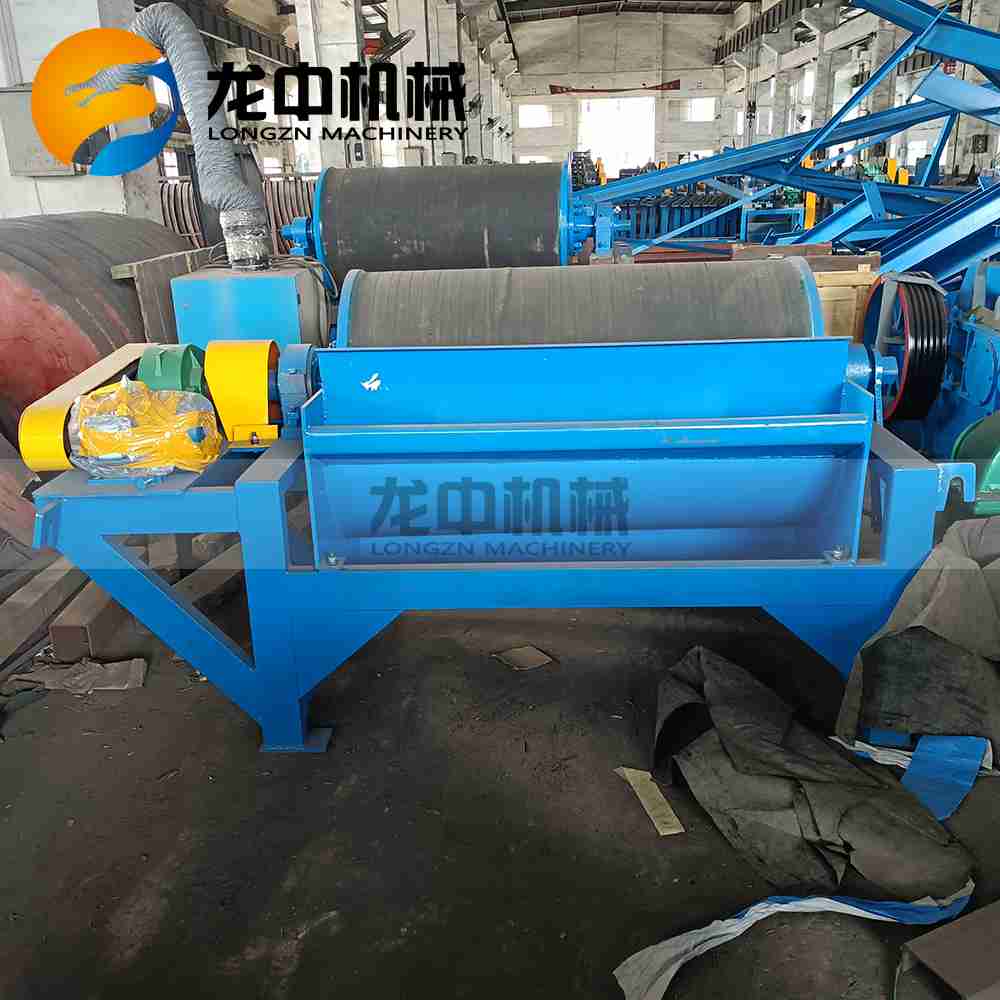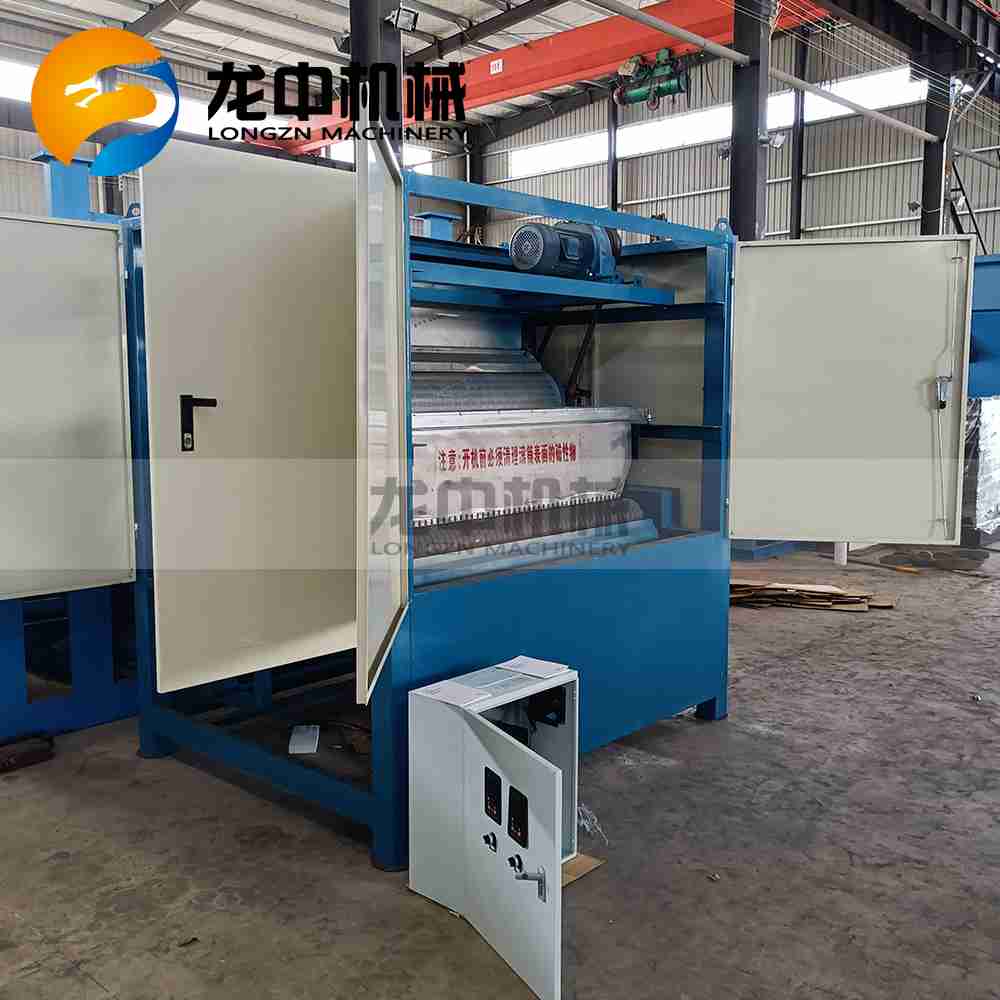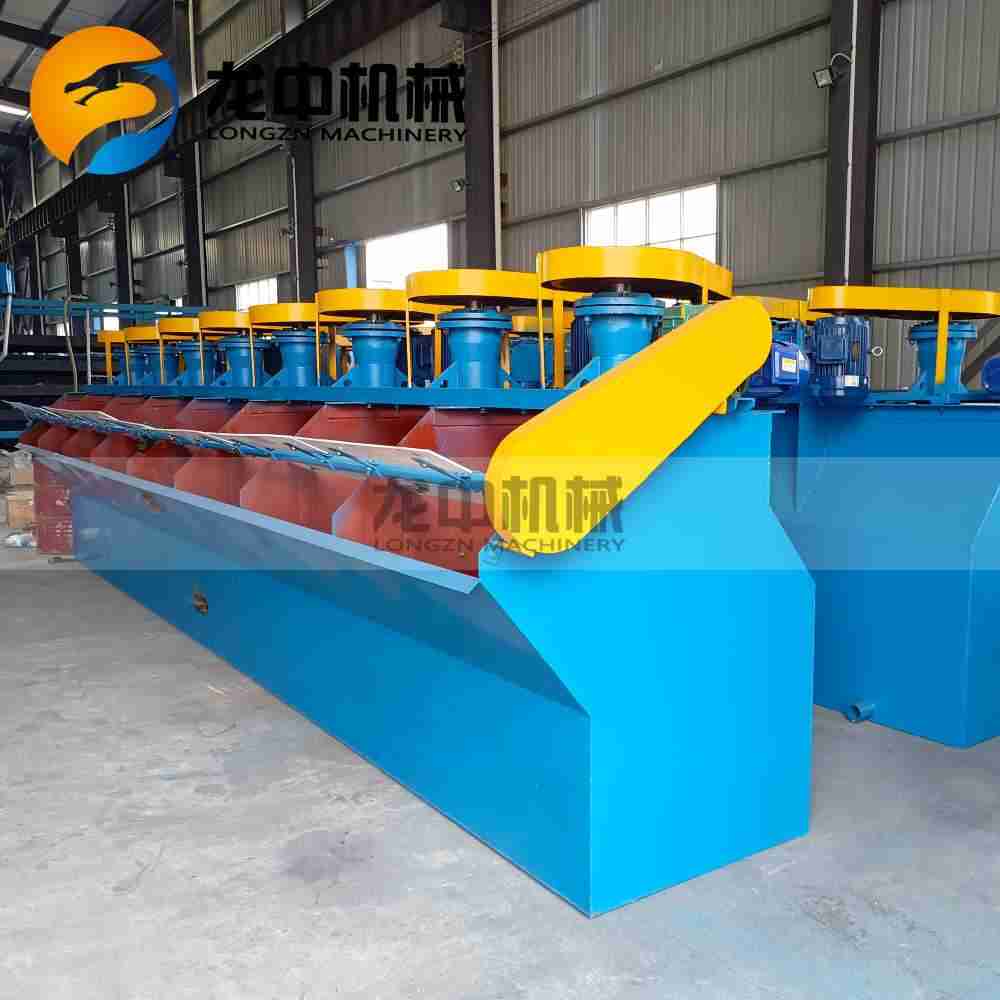

Magnetite (an ore of the oxide mineral magnetite) typically occurs as granular or massive aggregates, possesses strong magnetism, and is widely distributed. Depending on the types of iron-bearing minerals present, magnetite ores can be categorized as either single magnetite or mixed ores.
Generally, single magnetite ores are often processed using low-intensity magnetic separation, while polymetallic magnetite ores and mixed ores usually require combined beneficiation processes. These integrated processes may include magnetic separation, flotation, gravity separation, magnetizing roasting-magnetic separation, and reduction roasting-magnetic separation.

I. Magnetite Beneficiation Methods
1. Beneficiation of Single Magnetite Ores
In single magnetite ores, the iron minerals are predominantly magnetite. Due to their simple composition, strong magnetic properties, and ease of grinding and processing, these ores are typically treated using low-intensity magnetic separation.
1) When the grinding particle size is larger than 0.2 mm, a single-stage grinding-magnetic separation process is commonly
used in most iron ore processing plants.
2) When the grinding particle size is smaller than 0.2 mm, a two-stage grinding-magnetic separation process is applied.
3) If qualified tailings can be separated during the coarse grinding stage, a stage-grinding and magnetic separation process
should be adopted.
4) In arid and water-deficient regions, dry grinding-dry magnetic separation processes may be considered.
For diluted rich magnetite ores or lean magnetite ores, dry magnetic separation can first be used to remove gangue and
obtain lumpy rich ore, which is then further processed through grinding-magnetic separation to produce concentrate.
To obtain high-grade concentrate, methods such as reverse flotation or high-frequency fine screening can be applied to treat the magnetite concentrate. Additionally, to improve recovery rates, processes like re-processing of tailings can be considered to recover additional magnetic minerals.

2. Beneficiation of Polymetallic Magnetite Ores
Polymetallic magnetite ores often contain silicate or carbonate gangue minerals, along with associated minerals such as cobalt pyrite, chalcopyrite, and apatite. These ores are generally processed using a combined low-intensity magnetic separation-flotation process. This approach recovers iron through magnetic separation and then recovers sulfides or apatite through flotation.
Typically, the combined low-intensity magnetic separation-flotation process for polymetallic magnetite ores can be
divided into two flowsheets: 1) Magnetic separation followed by flotation 2) Flotation followed by magnetic separation
The key difference lies in the destination of the magnetite-sulfide intergrowth particles. In the magnetic separation-flotation
process, the intergrowth particles mainly report to the iron concentrate. In the flotation-magnetic separation process, they
mainly report to the sulfide concentrate. Therefore, under the same grinding fineness, the flotation-magnetic separation
process can yield an iron concentrate with lower sulfide content and a sulfide concentrate with higher recovery.
II. Beneficiation of Magnetite-Hematite Ores
Based on the types of iron-bearing minerals, common iron ores can be classified into magnetite, hematite, martite or semi-martite, vanadium-titanium magnetite, limonite, siderite, and mixed ores composed of two or more of these iron minerals. Among them, magnetite-hematite ore is a common type of mixed ore, and its beneficiation typically involves combined processes using multiple methods.
1. Beneficiation of Single Magnetite-Hematite Ores
Single magnetite-hematite ores contain iron minerals such as magnetite and hematite or siderite, usually exhibiting fine-grained dissemination. Gangue minerals are mainly quartz, sometimes with significant amounts of iron silicate. The proportion of magnetite in these ores varies, generally increasing from the surface to deeper parts of the deposit. The following two beneficiation methods are commonly used:
a) Combined Process of Low-Intensity Magnetic Separation with Gravity Separation/Flotation/High-Intensity Magnetic Separation
This process uses low-intensity magnetic separation to recover magnetite, followed by gravity separation, flotation, or high-intensity magnetic separation to recover weakly magnetic iron minerals. Production practice has shown that in the low-intensity magnetic separation-flotation process, the flotation step can be arranged after magnetic separation based on ore characteristics and plant conditions to ensure stable production indicators and cost savings. For the low-intensity magnetic separation-gravity separation process, it is recommended to use a combination of low-intensity magnetic separation-high-intensity magnetic separation or low-intensity magnetic separation-high-intensity magnetic separation-gravity separation to achieve better beneficiation performance.

b) Magnetizing Roasting-Magnetic Separation or Combined Processes
The magnetizing roasting-magnetic separation process for single magnetite-hematite ores is similar to that for single weakly magnetic iron ores. However, in combined processes involving magnetizing roasting-magnetic separation and other methods for single magnetite-hematite ores, fine ore is often treated using integrated processes combining low-intensity magnetic separation with other beneficiation methods.
2. Beneficiation of Polymetallic Magnetite-Hematite Ores
Polymetallic magnetite-hematite ores mainly contain iron minerals such as magnetite and hematite or siderite, typically in fine-grained dissemination. Gangue minerals include silicates, carbonates, or fluorite, with associated components such as apatite, pyrite, chalcopyrite, and rare earth minerals. The beneficiation of polymetallic magnetite-hematite ores is relatively complex in iron ore processing. Generally, a combined process of low-intensity magnetic separation and other methods is used: first, low-intensity magnetic separation recovers magnetite; then, gravity separation, flotation, or high-intensity magnetic separation recovers weakly magnetic iron minerals; finally, flotation recovers associated components. For mixed magnetite ores containing rare earths, when the ore contains a large amount of hematite, a reduction roasting-magnetic separation-flotation process can be employed. Reduction roasting-magnetic separation recovers iron minerals, and rare earth minerals are floated after reduction roasting, significantly improving the separation efficiency.
Conclusion
The above outlines common magnetite beneficiation methods. Due to variations in the types of iron-bearing minerals in magnetite ores, most magnetite processing plants adopt combined processes involving multiple beneficiation methods. Therefore, for magnetite beneficiation, it is recommended to conduct beneficiation tests to develop a tailored process flow. Based on the final test report, a rational and suitable magnetite beneficiation method can be selected.